1
Love, Sex, and Touch
Your body is a landscape
of hills and valleys,
woodland glades,
caves of delight
pastures of pleasure,
stirred by breezes of bliss,
fed by rivers of desire,
watered by clouds and rain of ecstasy.
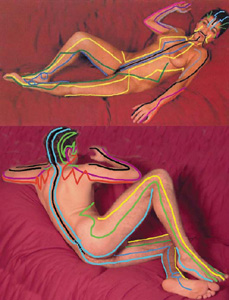
Fig. 1.1. The body is a landscape.
Nature has gifted us
with eyes to see these wonders,
ears to hear the sounds of love,
noses to smell the fragrance of passion,
tongues to taste the fruits of desire,
lips to kiss,
and hands to touch.
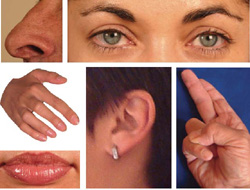
Fig. 1.2. The senses: nature’s gift
Whoever you are—woman or man, straight, gay, or bi—you can become a far more effective lover! The act itself is natural. You know what to do. It is the moments leading up to the act that make it more or less pleasurable for you and your partner. As with cooking a Chinese meal, preparation is the key. Knowing the psycho-sensual secrets of certain pressure points and energy channels of the body will help you become a better lover, however good you are already (figs. 1.3 and 1.4). You may have discovered this for yourself, quite by chance. Using these secrets will help you to create and enjoy longer and more pleasurable sexual encounters. You will be able to prolong peak moments beyond bliss into ecstasy.
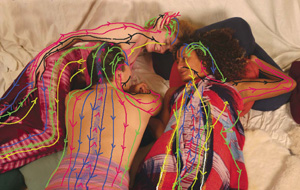
Fig. 1.3. Become a better lover by knowing the psycho-sensual secrets of pressure points and energy channels.
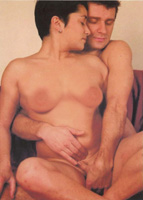
Fig. 1.4. Prolong peak moments beyond bliss into ecstasy.
THE ORIGINS AND HISTORY OF TAOIST SEXUAL PRACTICES
When lovers first touched they invented what we call Love-Shiatsu. Shiatsu is a Japanese word meaning “finger-push.” Sexual practices have been studied for centuries in both East and West. Chinese and Japanese traditions combined the study of sex with medicine based upon stimulation of certain pressure points. The Yellow Emperor, Huang Ti (2697–2598 BCE), codified the theory behind the therapy (fig. 1.5). Treatment, he decreed, should vary according to application, whether to heal or to stimulate and sustain sexual desire.
In its beginnings, Chinese medicine was clearly a departure from the practices of ancient shamans, who believed that illnesses were caused by bad spirits. The approach of the Yellow Emperor, on the other hand, linked disease with factors such as diet, lifestyle, age, and environment. His approach was conveyed in the talks that he had with his personal physicians, recorded in the Neijing, the Classic of Internal Medicine. Health and disease were also understood in terms of forces and principles in the universe, particularly yin and yang, the five elements, and chi (life-force energy).
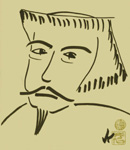
Fig. 1.5. Huang Ti, the Yellow Emperor
Yin and Yang
The concept of yin and yang is based on the dualistic principle of order that brings together contradictory principles and conditions. Yin and yang can stand for night and day, moon and sun, earth and sky, dark and light, cold and warm, matter and energy, or stillness and activity. Neither yin nor yang is considered to be “bad” or “good”; they are equally valued aspects of one unity. In Chinese medicine, being healthy means that yin and yang are in equilibrium. Illness results when the balance falls more to the side of either yin or yang.
The Five Elements
The five elements refer to five basic energy transformations that flow from the interactions of yin and yang. The physical elements found in nature (wood, fire, earth, metal, and water) are seen as symbolic expressions of the five tendencies of energy in motion. Wood represents energy that is developing and generating. Fire represents energy that is expanding and radiating. Earth represents energy that is stabilizing and centering. Metal represents energy that is solidifying and contracting. Water is energy that is conserving, gathering, and sink-ing. The five energies that give birth to the universe also form the organs and the personality. Thus, each human being, as a microcosm of these elemental energies, reflects the universe and its interacting forces. The model of the five elements provides helpful insights into the effect of mood on loving and indeed all aspects of relationship.
Chi: Life-Force Energy
Traditional Chinese medicine sees chi as circulating through the human body through a series of channels or meridians. Lined up along the meridians like pearls on a string are the acupuncture or acupressure points. It is at these points that the meridians are connected to the surface of the body; by touching these points from the outside, energy can be moved. The pressure points of shiatsu are the same as the points used for acupuncture.
Oriental love-medicine takes a holistic view, in which meridians, organs, senses, emotions—the physical, energetic, and spiritual aspects of humanity—all interact.
Immortality and Sexuality
In the days of the Yellow Emperor they searched for immortality as the logical extension of perfect health. He is said to have attained it by having sex with 1,200 wives and concubines. The Queen Mother of the West likewise but with numbers unrecorded.
The emperor and his female advisor Su Nu are credited with creating the Su Nu Ching, a dialogue of sexual practice, which included exchanges such as the following:
Huang Ti: “And what is the method of nine shallow and one deep?”
Su Nu: “That means to thrust nine times shallow and then one deep, in time with the breath. Too shallow may not yield the greatest pleasure, too deep may be injurious.”
Taoist practice has always been sexy. Four thousand years ago the top shelf was peopled with stories of the Yellow Emperor and the Queen Mother of the West. Nowadays we like one-to-one relation-ships and are perhaps skeptical of immortality. But we can enjoy the secrets that kept the Yellow Emperor going and the Queen Mother coming.
Sex Is the Servant, Not the Master
Taoists say that if the products of our pleasure are not being deployed to start new life, then we can internalize the intense energy, hormones, and nutrients to improve our own lives. From foreplay to climax, a Taoist controls and harvests the abundance of reproductive power otherwise wasted in unmindful intercourse.
Yang has the power to repopulate a continent in a single ejaculation, yin has eggs to generate hundreds of lives. The Taoist masters taught the emperors and their wives and concubines to recycle this potent life force and harmonize their cycles of pleasure through a process known as Inner Alchemy. Later Taoist sex manuals continued the tradition of treating both genders as equal, but as dynasties came and went, mixed fortunes followed for the practices.
Sex and the Dynasties
The Chou Dynasty (770 BCE to 222 BCE) had a Taoist doctrine although Taoism was not yet a formal religion. Women were thought to have an inexhaustible supply of yin essence. A man who ejaculated or used up his yang essence without absorbing enough yin could experience health problems and even death.
The Ch’in Dynasty (221 BCE to 24 CE) changed from Taoism to the quite different Confucianism, which considered women inferior. Sex was considered to be for procreation only, otherwise sinful. However, religious and magical Taoism peacefully coexisted with behavioral Confucianism.
A Taoist resurgence in the Later Han Dynasty (25 CE to 220 CE) saw the rehabilitation of sexual practices and the reappearance of texts attributed to the Yellow Emperor. In the confusion of Three Kingdoms and Six Dynasties (221 CE to 590 CE) conflicts arose between Taoist, Confucian, and the newly arriving Buddhist doctrines. The rise of Buddhism under the Northern Wei (386 to 534 CE) led to persecution of practitioners of the old ways. Healing and sexual practices became politicized.
Then in the Sui Dynasty (590 CE to 618 CE) Taoism again became the official religion and sexual literature flourished. Secret Instructions of the Jade Bedchamber appeared. It is a Taoist text on harmonizing male (yang) and female (yin) energies for mutual nourishment—yin drawing on yang and yang from yin. It declares that single, dual, and multiple energy cultivation can be practiced for pleasure, health, longevity, healing, self-realization, and, ultimately, experiencing a self beyond the cycle of life and death.
Under the Tang Dynasty (618 CE to 960 CE) Taoism became “the Establishment.” Physicians in the Tang Dynasty, who vivisected condemned prisoners, described flows of energy through invisible channels, which excited certain sensations in different parts of the body, ceasing at the moment of death. They speculated that if this flow could be sustained . . . it might offer healing and even immortality.
From later Sung to the present, various forms of Taoism evolved, in which some Buddhist and Confucian doctrines were integrated. Chinese alchemists sought an elixir to render their emperors immortal and perpetually potent. This external alchemy lost its appeal when it dispatched a few courtiers and kings as well as a number of alchemists. But the search for eternal health and infinite pleasure continued.
While the Neijing, the Classic of Internal Medicine, became the source for most Chinese medical literature, the classics on the “Art of the Bedchamber” are still widely quoted in almost every Oriental sex publication in both East and West. The shiatsu pressure points for infinite pleasure indefinitely prolonged were passed down through the secret lineages of the Fang Shi.
RUNNING WATER DOES NOT STAGNATE
Nowadays we are not emperors and empresses. We go to work, we play, we sleep. Our society has different problems to cope with. Rather than having our heads cut off for speaking out of turn we are more likely to experience stress in the workplace, leading to heart problems and other such diseases. But we still ingest toxic substances for moments of immortality. And we still have sex. Our modern-day ideal is to have a nice meal, a bottle of wine, and frantic sex. If everything goes as we hope, we will climax at the same time. Then we’ll fall asleep or go take a shower.
We can benefit from the ancient perspective that regarded sex as healthy, fun, and serious business: If you want to understand the business of life, then you need to examine the business of where life starts and where life ends . . . the business of the bedchamber.
The ancient teachings also help us to understand the differences between men and women and how harmonizing these differences results in better loving. Women fear insensitivity. Men fear inability to perform. Both fear rejection. Are you aroused more quickly, your partner more slowly? It is quite usual for the man to climax first. Woman comes to the boil more slowly but simmers longer. He’s done in, she’s ready for more.
Shiatsu secrets help modern lovers harmonize different cycles of arousal:
- For longer and more pleasurable sexual encounters
- To sustain the intensity of first love through all the seasons of maturing relationship
- To avoid energy loss
- To maintain good sexual health: running water does not stagnate
These secrets are based on intimate knowledge of the flow of energy.